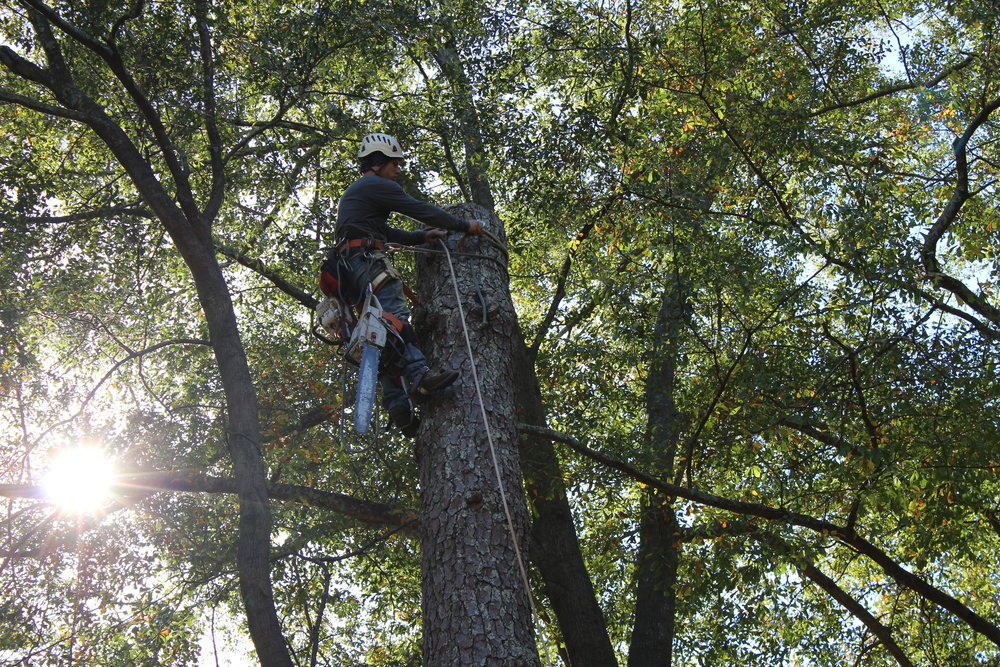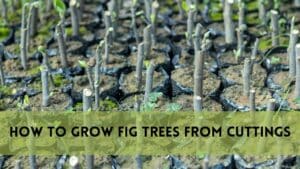In the arid landscapes of the southwestern United States, the Palo Verde tree stands as a resilient symbol of nature’s ability to adapt and thrive. If you find yourself with the task to trim a Palo Verde tree, fret not – it’s a straightforward process that, when done correctly, ensures the health and aesthetics of this unique desert tree.
Understanding the Palo Verde Before Trimming
Before diving into the trimming process, let’s take a moment to appreciate what makes the Palo Verde tree so special. Its name, which means “green stick” in Spanish, hints at its distinctive green bark and branches. These trees are well-suited to the harsh desert environment, with their ability to photosynthesize through their bark, a rare adaptation in the plant kingdom.
Why Trim a Palo Verde Tree?
The heading “Why Trim a Palo Verde Tree?” serves as an introduction to the reasons behind the act of trimming or pruning a Palo Verde tree. Let’s delve into the details of why this process is essential:
Enhancing Tree Health: Pruning a Palo Verde tree is a preemptive way to improve its general health. You can stop the spread of illness and make sure the tree uses its resources wisely by cutting off any dead or unhealthy branches.
Enhancing Aesthetic Appeal: A well-trimmed Palo Verde tree is not just healthy but also visually appealing. Removing excess or unwanted branches helps maintain the tree’s natural form and structure, contributing to a more attractive and balanced appearance in your landscape.
Preventing Safety Hazards: Dead or weak branches pose safety risks, especially during storms or high winds. Trimming eliminates these potential hazards, safeguarding your property and ensuring the well-being of anyone in the vicinity.
Encouraging Proper Growth: Crossing or rubbing branches can hinder the proper growth of a Palo Verde tree. Trimming such branches ensures that the tree maintains a well-balanced canopy, allowing for optimal sunlight exposure and air circulation.
Maintaining Unique Features: Palo Verde trees have a distinctive green bark, which is crucial for photosynthesis. Careful trimming ensures that you don’t remove too much of this green bark, preserving the tree’s ability to generate energy through its bark, a rare adaptation in the plant kingdom.
Preventing Disease Entry Points: Trimmed branches create clean cuts, reducing the chances of diseases entering the tree. By eliminating potential entry points for pathogens, you contribute to the Palo Verde tree’s resilience against common diseases.
The decision to trim a Palo Verde tree is driven by a combination of health, safety, aesthetics, and the unique features of this desert-adapted tree. Understanding the “why” behind tree trimming empowers you to approach the process with a purpose, ensuring the best outcomes for the tree and your landscape.
How to Trim a Palo Verde Tree?
Gather Your Tools for Trimming Palo Verde Tree
Assemble the necessary tools before you begin. You’ll need pruning shears, loppers, and a pruning saw. Ensure these tools are clean and sharp to make precise cuts without causing unnecessary stress to the tree.
Select the Appropriate Time for Trimming
When it comes to pruning Palo Verde trees, timing is everything. When the tree is still dormant, in late winter or early spring, is the best period. By doing this, the damage to the tree is reduced and maximum healing is possible.
Recognise Infected or Dead Branches
First, determine whether branches are sick or dead. These can be dangerous for the tree’s general health in addition to being ugly. With loppers or pruning shears, trim them off at the root.
Eliminate Branches That Cross
Seek out branches that touch or cross one another. These have the potential to cause wounds, which open doors for illnesses. To preserve the integrity of the tree’s structure, cut off the weaker or less attractive branch.
Sustain an Equilibrated Canopy
Take a step back and evaluate the tree’s general form. Cut off any branches that interfere with the tree’s natural shape in order to achieve a balanced canopy. This encourages appropriate air circulation and improves its visual attractiveness.
Trimming Carefully for the Special Qualities of Palo Verde
The principal source of photosynthesis for palo verde trees is their characteristic green bark. Take care not to remove too much of the green bark as this might affect the energy production of the tree.
Get Rid of Trimmed Branches Correctly
After you have finished pruning, properly dispose of the branches. Think about adding them to your compost pile or using them as mulch. This environmentally friendly method guarantees that the pruned branches make a beneficial contribution to the ecology.
Success Advice for Trimming Palo Verde Tree
Prevent Over Pruning: A Palo Verde tree’s health may suffer from over-trimming. As a general rule, never remove more than 20% of a tree’s canopy at once. This is known as the 20% rule. By taking this care, the tree is spared undue stress and is able to recuperate and flourish following the pruning.
Clean Your Tools: Pruning implements have the ability to transmit infections from one branch to another. It is essential to sanitize your equipment in between cuts to reduce this danger, particularly if you have trimmed a sick branch. to encourage a healthy tree, use rubbing alcohol or a disinfectant on the blades to stop the spread of infections.
See an Arborist If You’re Not Sure: It is a good idea to get the advice of a qualified arborist if you are unsure about the pruning procedure or are working with a huge Palo Verde tree. Professionals with extensive training and understanding in tree maintenance are known as arborists. Under their direction, you can be confident that the pruning is done properly and that your tree’s unique demands are taken into account.
Following these guidelines will increase the likelihood of a fruitful pruning session and help maintain the long-term vitality and health of your Palo Verde tree. Recall that careful and educated pruning produces trees that are healthy and beautiful to look at, as well as trees that flourish in their natural habitat.
FAQs
When is the best time to trim a Palo Verde tree?
The optimal time for trimming a Palo Verde tree is during late winter or early spring when the tree is dormant. This minimizes stress and allows for optimal healing.
How much of the Palo Verde tree canopy can I trim without causing harm?
Follow the 20% rule – never remove more than 20% of the tree’s canopy at once. Over-pruning can stress the tree, impacting its overall health.
Can I trim Palo Verde branches with green bark?
While trimming is essential, be cautious not to remove too much green bark. Palo Verde trees utilize green bark for photosynthesis. Maintain a balance to ensure the tree’s energy production.
What should I do with the trimmed branches?
Dispose of trimmed branches responsibly. Consider using them as mulch or adding them to a compost pile for a sustainable approach that benefits the ecosystem.
Is it necessary to sanitize pruning tools, and how often should I do it?
Yes, it’s crucial to sanitize pruning tools, especially if trimming diseased branches. Use disinfectant or rubbing alcohol between cuts to prevent the spread of diseases. Regular sanitization ensures healthier trees.
Conclusion
When done correctly and with the appropriate equipment, pruning a Palo Verde tree may be a gratifying and healthy activity for the tree. You help ensure the life and vigour of this rare desert inhabitant by adhering to these procedures and recommendations. Prepare yourself, go outside, and start pruning your Palo Verde tree. Your tree will appreciate the effort with a vivid show of green hardiness.





